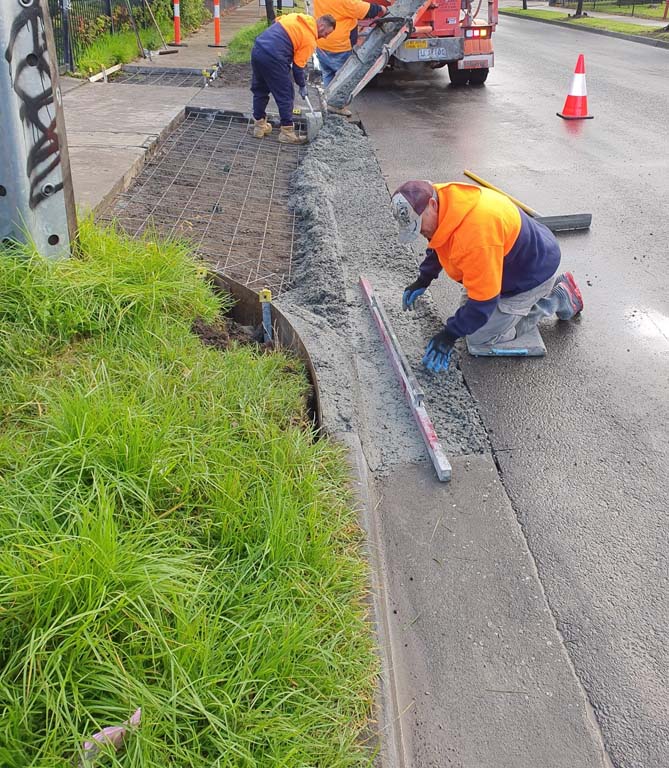Exposed Aggregate Concrete in Civil Works: What are the Advantages?
21 March 2025
Capital Industry Group offers expert exposed aggregate concrete services for durable, safe, and sustainable civil projects across Melbourne.
Exposed aggregate concrete provides both functional strength and aesthetic appeal to infrastructure projects, increasing its demand for diverse civil applications. Slip-resistant surfaces are vital for pedestrian and vehicular safety, leading to this type of concrete’s extensive use in high-traffic areas. Design flexibility further extends its attractiveness for projects requiring visual harmony with surrounding environments.
Durability and Strength of Exposed Aggregate Concrete in Civil Projects
Resistance to weathering and abrasion defines exposed aggregate concrete, vital for enduring harsh environmental conditions typical in Australian civil projects. Structural integrity remains uncompromised under heavy loads and continuous use, ensuring longevity and reducing maintenance costs. Moreover, its composition minimises the risk of cracking and deformation, even under significant stress. This resilience contributes significantly to the long-term reliability of infrastructure.
Concrete surfaces resist degradation from chemical exposure, including de-icing salts and industrial pollutants. Minimal deterioration safeguards structural integrity and extends the service life of civil infrastructure. This property proves invaluable in urban and industrial settings, thereby ensuring lasting performance.
Optimising High-Traffic Areas with Exposed Aggregate Concrete
Pedestrianised areas, footpaths, and driveways benefit significantly from the application of aggregate mixes. Surface texture delivers enhanced grip, minimising the likelihood of slips and falls, particularly in wet conditions. Consequently, safety improvements surrounding public amenities, commercial properties and residential zones ensure community well-being.
Specified concrete surfaces can handle substantial vehicular traffic, making them ideal for roadways and parking facilities. This capability reduces the potential for surface degradation, minimising repair work and traffic disruptions. Further enhancement of the structural integrity of areas subject to continuous heavy use contributes to extended service life.
Surface treatments using aggregate offer design flexibility, allowing for customisation to match surrounding landscapes or architectural styles. Colour variations, aggregate types, and patterns integrate seamlessly into urban and rural environments. This adaptability enhances the aesthetic value of civil projects while maintaining functionality and safety.
Sustainability of Exposed Aggregate Concrete in Civil Construction
Environmental impact is minimised using locally sourced aggregates, reducing transportation distances and associated emissions. Responsible sourcing and production methods further contribute to a lower carbon footprint compared to other construction materials.
• Recycled Aggregate Use: Incorporating recycled aggregates into concrete mixes reduces the demand for virgin materials, thus diverting construction and demolition waste from landfills and supporting circular economy principles.
• Permeable Concrete Options: Permeable concrete allows rainwater infiltration, reducing stormwater runoff and replenishing groundwater supplies, assisting in mitigating the impact of urban development on local ecosystems.
• Light-Coloured Aggregates: Light-coloured aggregates reflect sunlight, lowering surface temperatures and reducing the urban heat island effect, leading to reduced energy consumption for cooling in urban environments.
• Extended Lifespan: Durability and the extended lifespan of concrete surfaces result in lower replacement rates, conserving resources and reducing waste generation, providing long-term cost savings and a reduced environmental burden.
• Reduced Maintenance: Reduced maintenance requirements translate to lower consumption of water and chemicals for cleaning and upkeep, minimising the environmental impact associated with ongoing maintenance activities.
• Supplementary Cementitious Materials: Utilisation of supplementary cementitious materials, such as fly ash or slag, lowers the cement content in the concrete mix, causing reduced greenhouse gas emissions associated with cement production.
For civil infrastructure that balances durability with visual appeal, decorative concrete offers clear advantages. At Capital Industry Group, we apply our network maintenance and asset management knowledge to deliver high-quality civil solutions, carefully tailored to project needs.
Ensure the long-term performance of your civil infrastructure with our exposed aggregate concrete solutions and other civil service capabilities.
Optimized by: Netwizard SEO

